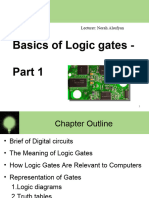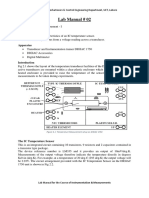0% found this document useful (0 votes)
34 views16 pagesUnderstanding Digital Logic
The document provides an overview of basic digital logic principles, focusing on various logic gates such as OR, AND, NOT, NAND, NOR, XOR, and XNOR, along with their electrical equivalents and operational characteristics. It also discusses the role of comparators and timers in relay logic systems. Each logic function is described in terms of its inputs, outputs, and how they interact within a digital logic framework.
Uploaded by
satyaveer singhCopyright
© © All Rights Reserved
We take content rights seriously. If you suspect this is your content, claim it here.
Available Formats
Download as DOCX, PDF, TXT or read online on Scribd
0% found this document useful (0 votes)
34 views16 pagesUnderstanding Digital Logic
The document provides an overview of basic digital logic principles, focusing on various logic gates such as OR, AND, NOT, NAND, NOR, XOR, and XNOR, along with their electrical equivalents and operational characteristics. It also discusses the role of comparators and timers in relay logic systems. Each logic function is described in terms of its inputs, outputs, and how they interact within a digital logic framework.
Uploaded by
satyaveer singhCopyright
© © All Rights Reserved
We take content rights seriously. If you suspect this is your content, claim it here.
Available Formats
Download as DOCX, PDF, TXT or read online on Scribd
/ 16
























































































